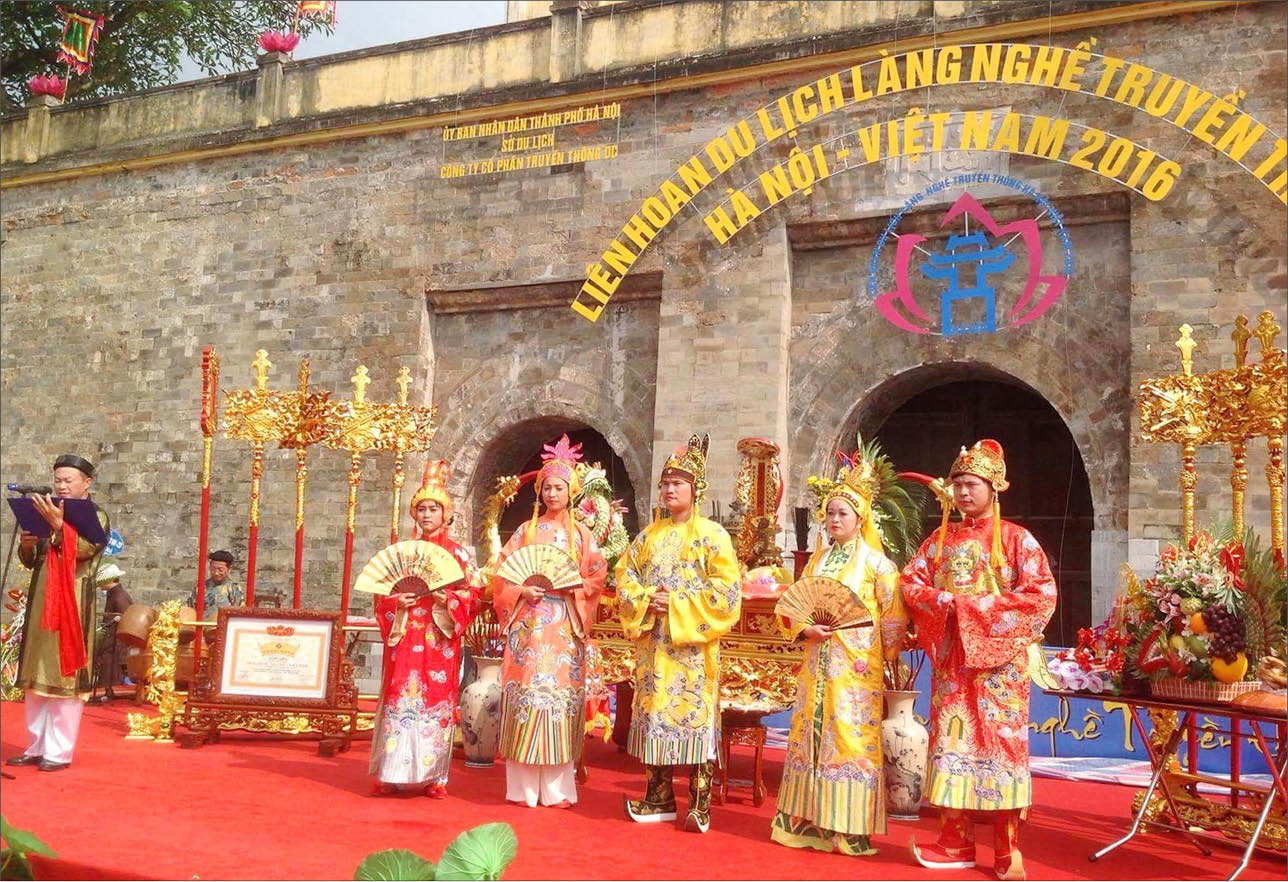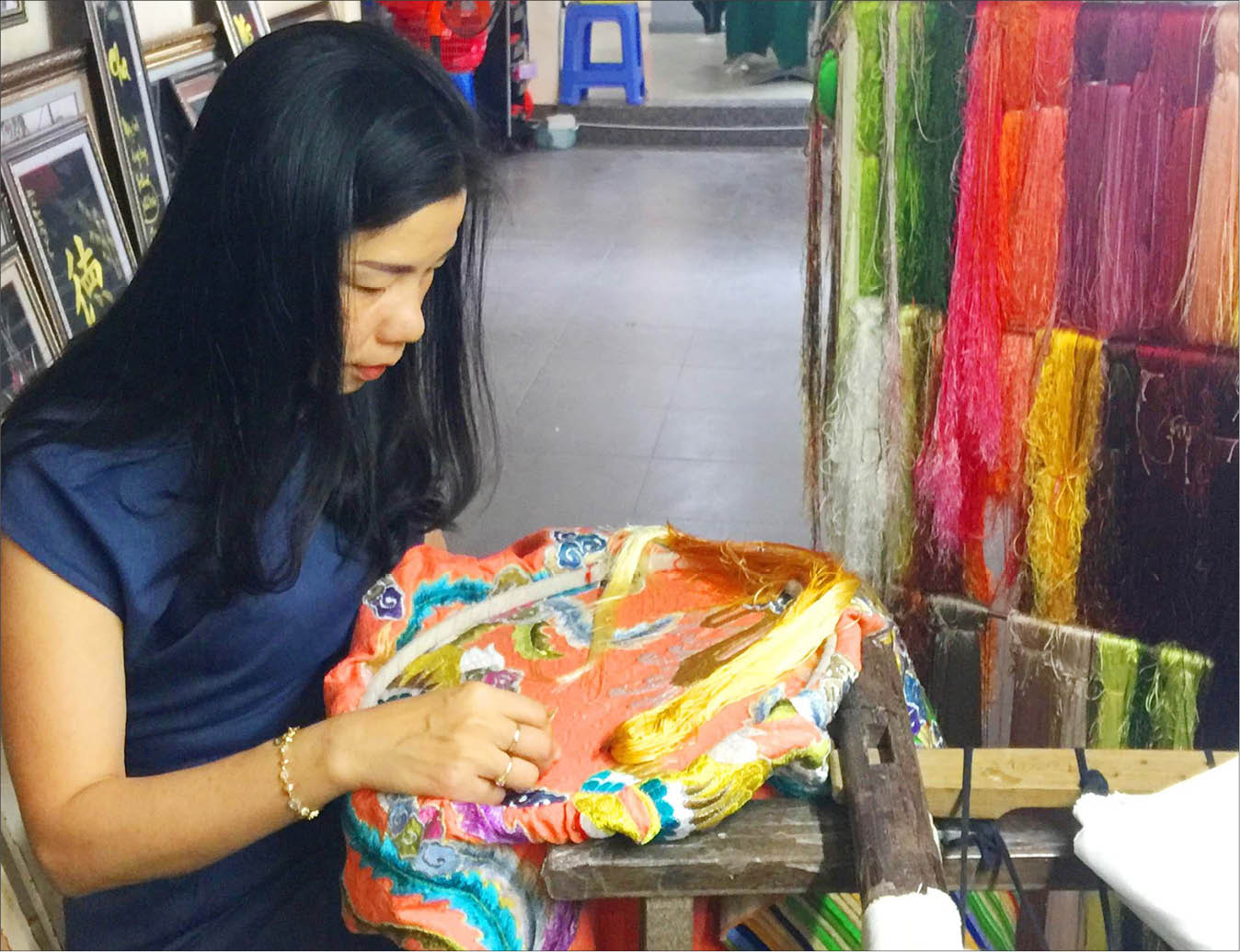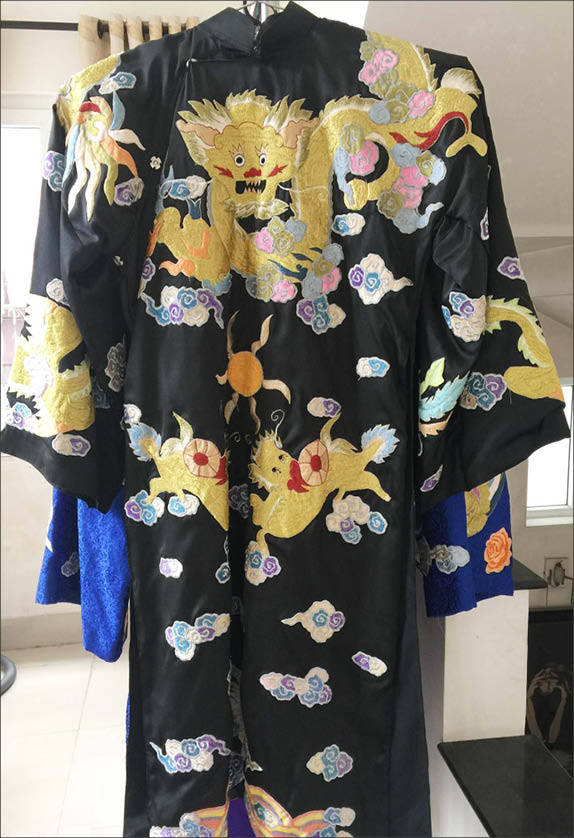From 4th to 16th September, Doan Trang will be one of the three Vietnamese representatives to introduce the cultural values of the country in an exhibition in Korea. While the other two will present phap lam (ceramic enamel) and wood art, Doan Trang aims to proudly introduce her own collection of Hue royal costumes.

Introducing the collection of Hue royal costumes in Hanoi
Under the Nguyen Dynasty, the royal court issued very detailed and rigorous regulations on the costumes for each class of society, based on specifications of material, color, tailoring methods, and decorative patterns. According to researcher Tran Duc Anh Son, when compiling the renowned Kham Dinh Dai Nam Hoi Dien Su Le (Royal rules and regulations), historians specially reserved two volumes (number 78 and 242) for recording official regulations and dress codes of Kings and Queens, Princes and Princesses, and the mandarins: from the costumes to be used in varied events such as the great court ceremonies, festivities, special events, New Year days, to the costumes for daily and casual activities. More particularly, the decorative motifs based on themes had to strictly abide to the conventions of social hierarchy.
Some of the original and rare Hue royal robes are being preserved at a few historical and royal museums or kept with some fortunate private collectors. Although limited in number, these fashion legacies have inspired many artisans to restore the old royal costumes of ancient Hue. Ms. Nguyen Thi Doan Trang was one of such devoted people who created a collection of 15 sets of Hue royal costumes.

Delicate hand embroidery stitches
The passion for traditional ao dai has urged Nguyen Thi Doan Trang to change her job from an English teacher to the owner of Doan Trang Tailoring and Embroidering enterprise. At present, her business has been one of the biggest designers and tailors for ao dai in Thua Thien Hue province.
As for the idea of restoring royal costumes, Doan Trang simply commented: “I'm proud of my beautiful and dreamy Hue city. Unfortunately, after each Hue Festival, Hue immediately returned to its idleness. This urged me to do something to Hue, so the city would look splendid and culturally rich in the eyes of visitors. Making these costumes was the best fit for my job, so I want to put in my efforts to introduce to the young people and visitors the unique fashion of a dynasty”.
15 sets of Hue's royal costumes have been completed by Nguyen Thi Doan Trang, with the ranks starting from the King, the Queen, the Queen Mother, the Prince, the Princess, to civil and military mandarins, high-ranking mandarins, eunuchs, maids, and soldiers. In the years 2015 and 2016, this collection was exhibited in Malaysia and Hanoi Capital. At the exhibitions, the collection drew large public’s attention.

The King’s gown
To complete the collection, Doan Trang persisted with her work for many years. She did research on Hue royal costumes through books, the Internet and experienced predecessors. Compared with the original court gowns, Ms. Trang believed her products could not be perfect replications, but basically fine ones.
However, certain details were impossible to be replicated, such as the exact color tone, cloth and thread materials. Other decorative details were meticulously crafted to reproduce a precise copy of early prototypes. Doan Trang’s implications were that rigid regulations on royal gown’s hierarchical decorations needed to be strictly complied with.
To show more of Hue, Doan Trang cherished many new ideas and was eager to carry them out. She needs more time; but what concerns her most these days is her voice in royal costumes used in the market has gone unnoticed so far. “Many places in Hue advertise to offer “King rice” and provide services to wear royal costumes for visitors. In fact, the costumes used by those services reflect only a minor part of the original gowns”.
Stỏy and photos: Dong Van